The Neretta Rail Camera (2011)
The first large format lens I ever bought was a late 1920's Zeiss Tessar 135/4.5 that must have come off a 9x12cm Zeiss Donata. It cost me £30 in a second hand camera shop in Singapore. Since I started shooting Whole Plate and 5x7 a few years back the lens has just been sitting around unused, which is a pity as the shutter is excellent and the lens has everything you'd expect from early an uncoated Tessar. It's capable in a beautiful way.
Well, that's one old part that can be reused. Cue a broken Cobra tripod, the front fork from a Houghton Folding Klito, (1920's), the ground glass and fresnel from a Speed Graphic, (1950's), the viewfinder from a set of Taron auxiliary lenses, (1960's), the 1/4" thread socket from some unknown ever-ready case, the film back from an alternative version of the Neretta 4x5 that was never completed, knobs leftover after building the Surveyor 4x5, a mini ballhead, and of course some new bellows which were made for the purpose. Creating a new camera out of old parts just needed a little cobbling, and some casting.
Using a tripod leg instead of a standard focusing rail seemed feasible but I needed some way of attaching the rear standard, hence the casting. Some piece of plumbing might have done it but I couldn't find any shapes that would fit securely. I still had some Britannia metal, (lead-free pewter), lying around from casting small sculptures years ago. It does not have a high tensile strength, but it melts at a low temperature, is robust enough to bear weight and easy to fashion.
So first the mould.
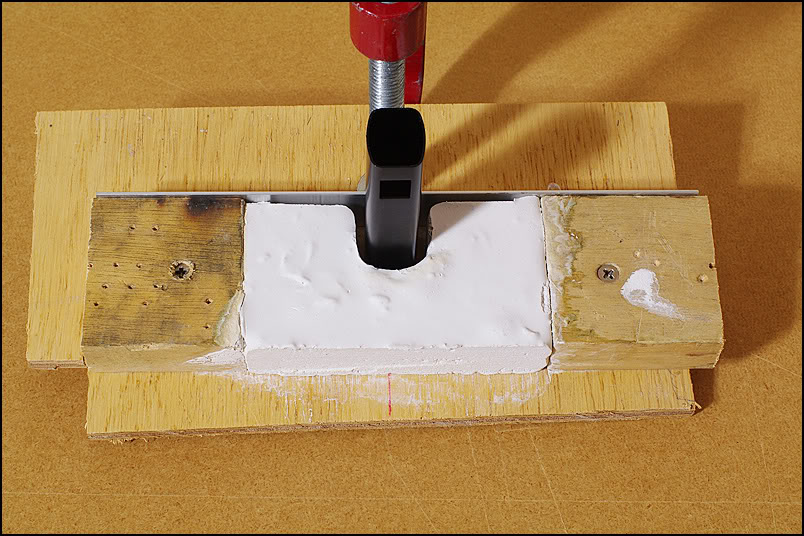
Then the hot metal.
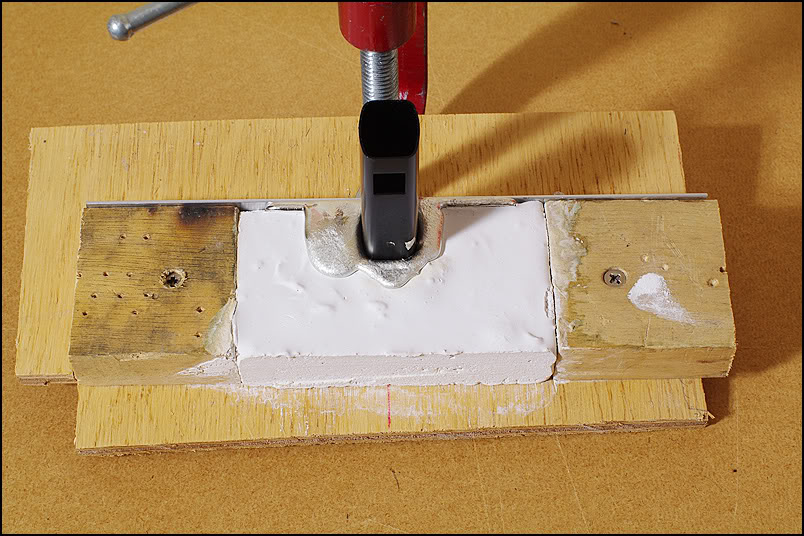
And finally, the functional base for the camera.
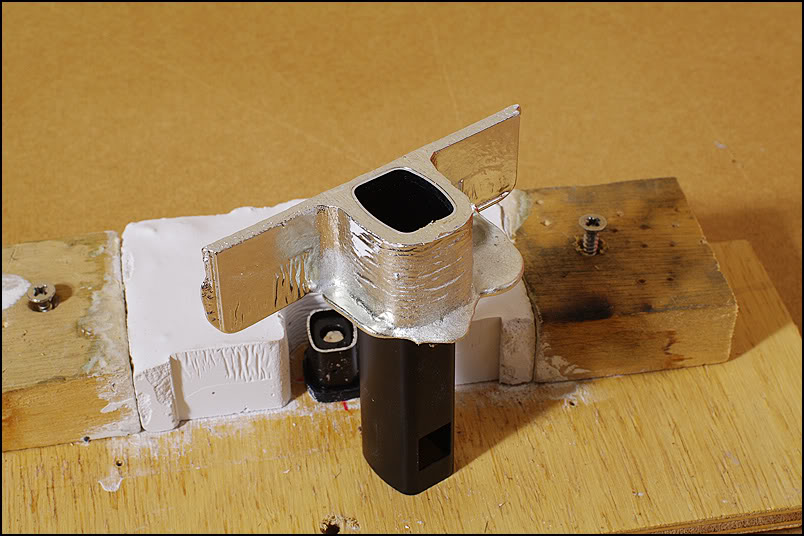
Bit by bit it assembled itself, almost. The rest was aluminium strip from B&Q. I prefer brass, but that would be too expensive for a parts cam!
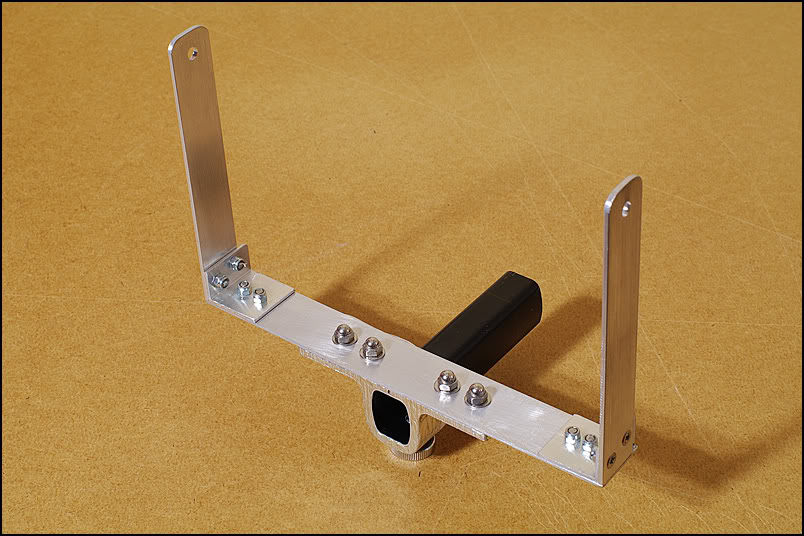
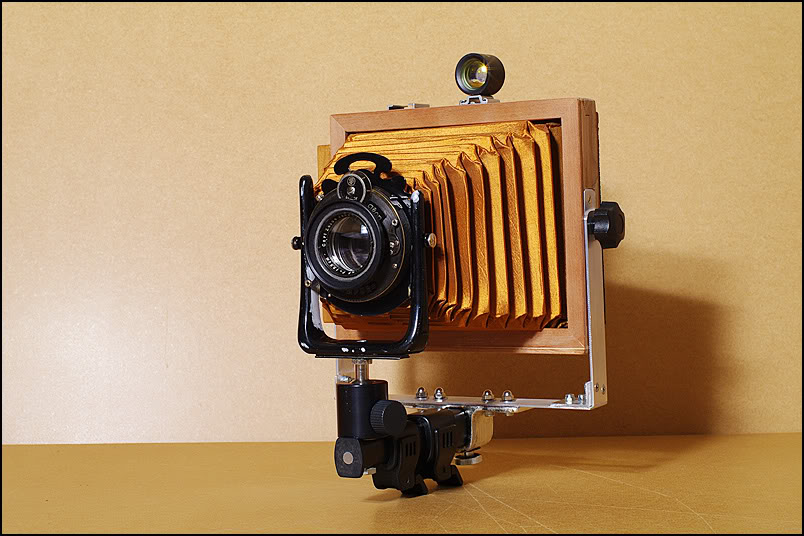
The front standard has a free range of movements due to the ballhead, including rise and fall on the fork. The rear has forward tilt, and just a very slight degree of backward tilt. The extension runs from 135mm to 250mm for macro work. I also have two other lenses that cover 4x5, a 90mm and a 150mm, but they usually live on other cameras.
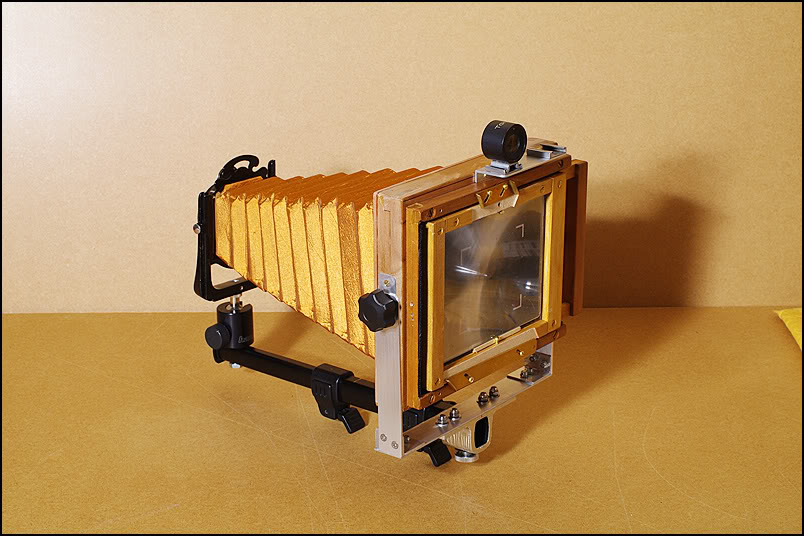
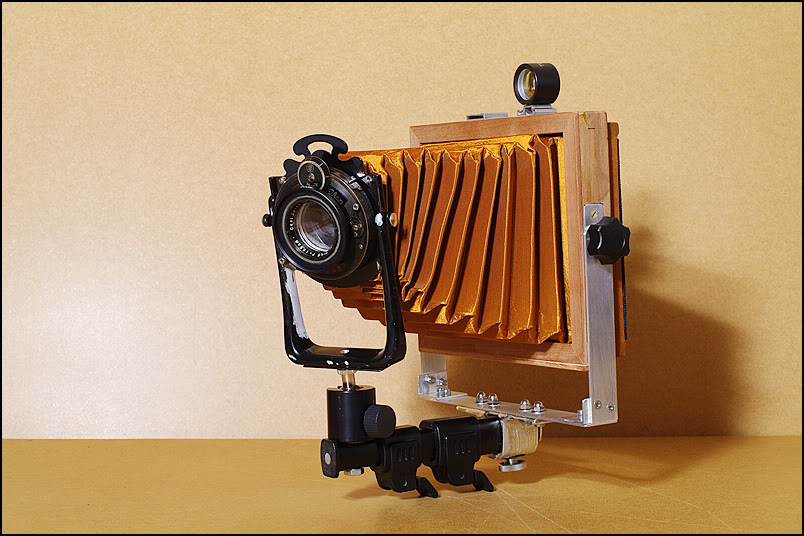
Although constructed as a 4x5, in a studio context I might just as often use a 6x7 roll film back. And Polaroid's are not impossible, (pun, geddit?)
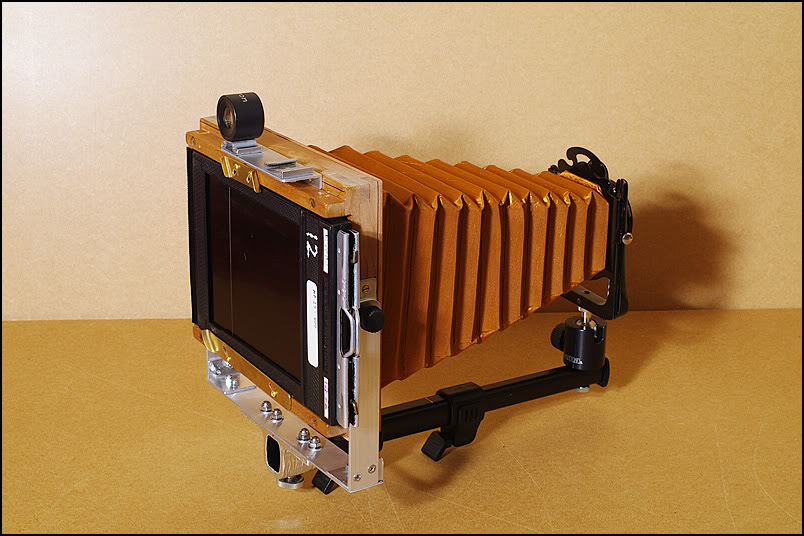
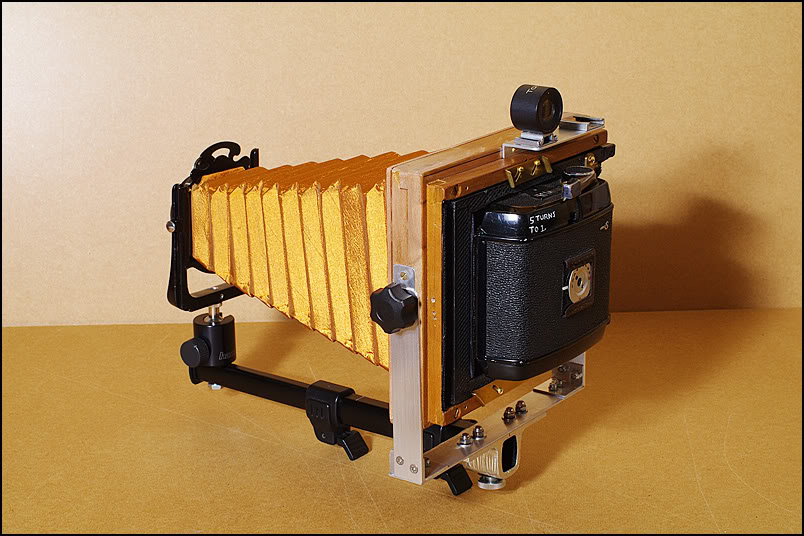
A test out of doors.
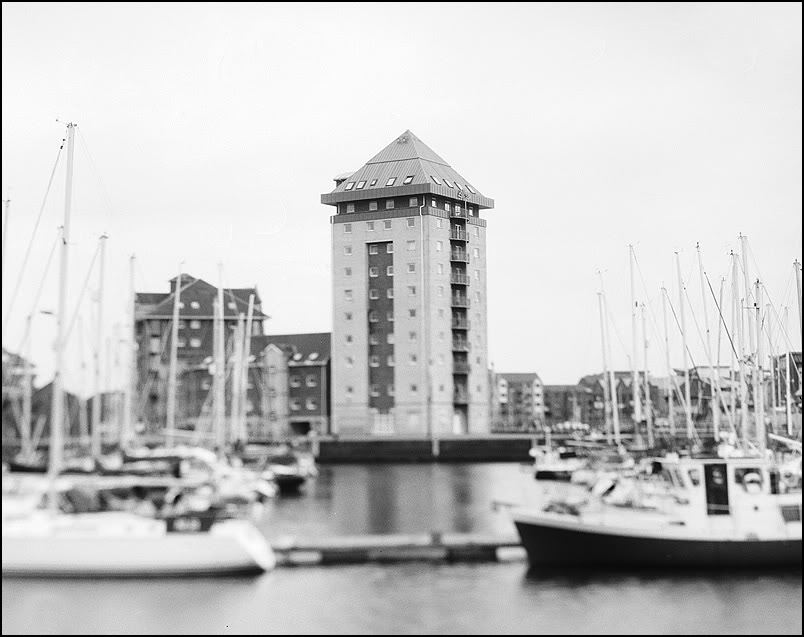
And finally some serious work.
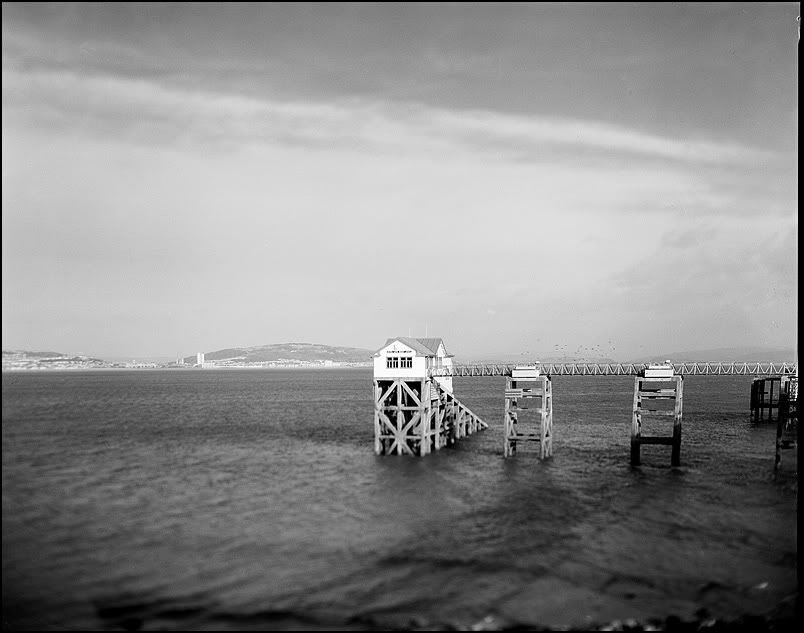
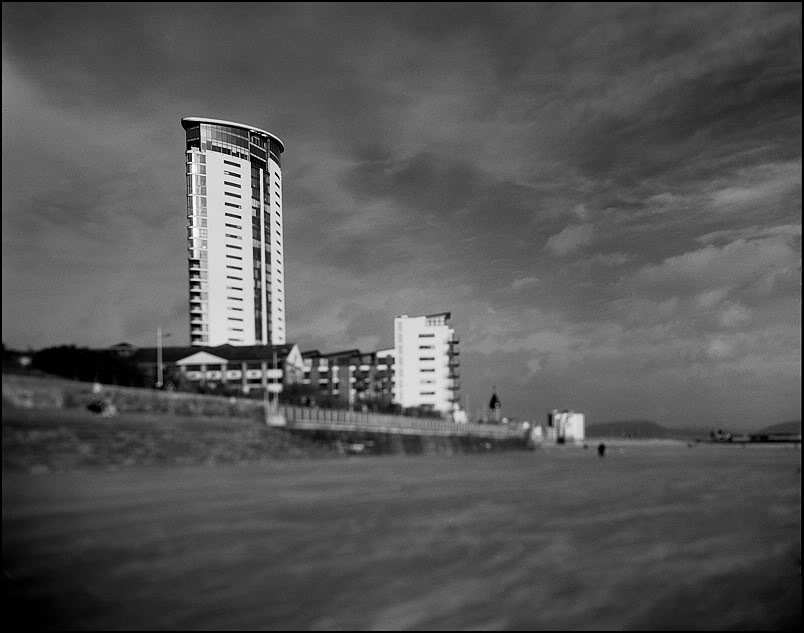
The Neretta Micro Camera 2012
It's a long story, but I've been clearing one half of the studio/workshop and condensing another, with the inevitable consequence that a lot of stuff has headed out to the recycle yard. Naturally, that has included excavating camera parts from various boxes, bins, and packets that have been quietly maturing in the dark. One of the items I came across was the very first pinhole 'box' I ever made, or at least the front half of it - the other half had already gone when I gave away the Mamiya Polaroid holder that once sat behind it.

The pinhole box was dutifully stored in a new location. A day or two later I came across a Graflex "23" roll back. This was an odd one that someone had once grafted onto a Busch 6x9 Pressman, and then abandoned. The camera had come to me last year following a ten-year exile in someone's garden shed.

After a mere twenty-four hours, I was able to visualise the two together as partners, and after a little hacking, screwing and filling, plus a few extra additions from the parts bin and the wood store, a new 6x9 was sitting on the tripod. (Well, since I already have an RB67 roll film holder it can be a 6x7, too.)
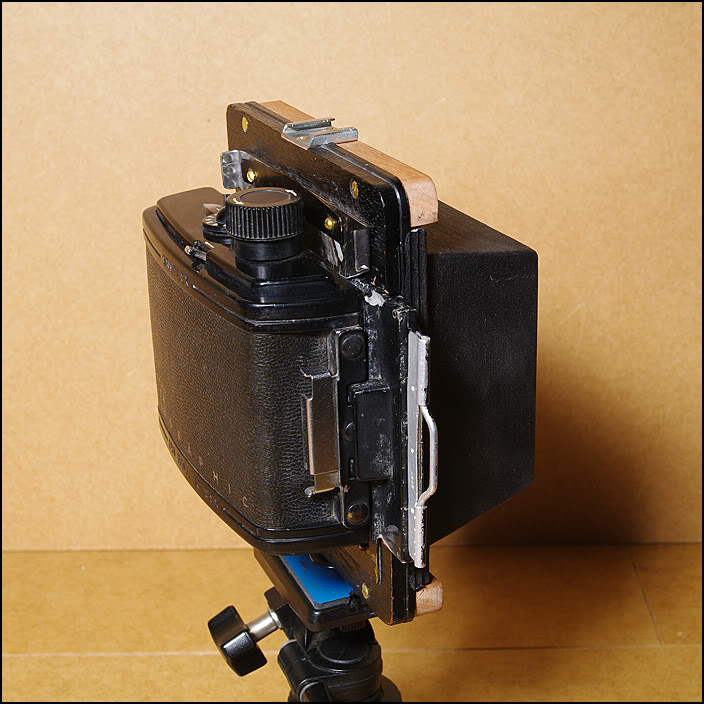
For a pinhole camera, that was already labour enough. But I also wanted to find a meniscus lens that could work with the new focal length - about 55mm. This is a wooden box with a fixed focal distance and I didn't have a suitable helical, but the Pressman back was a Graflok and a view screen would be a straightforward way to check the focus of different lenses.
A couple of years ago a friend who made ground glass pieces for large format cameras sent me a couple of samples and I still had one that was just a fraction larger than 6x9. Cue a couple of 5mm strips of limewood, which is the right registration distance to support the glass, and a few other strips to make up a viewing frame.
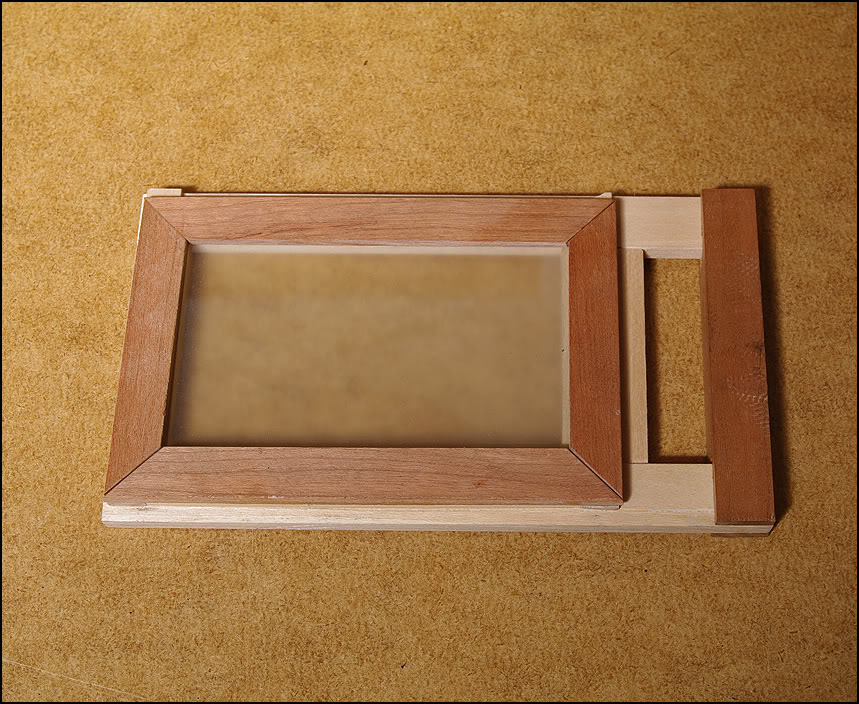
Playing around with some glass I found that the rear element of an 85/4.5 Agnar was actually quite suitable for long distance if turned around. Fortunately the threads on the Isolette shutters are the same fore and aft, so I reversed the lens in its casing and put it on the front of the camera. That worked, and so well that it could be focused from infinity down to about 2.5 metres by unscrewing it to the limit, though with quite a lot of swoosh at the edges.
Another rear element that fits the thread actually gives a close focus range of around 150mm - very useful for extreme close-ups. I don't remember where this one came from, possibly off a defunct Bessa 66 as it's marked with a V. number (Voigtlander) on the casing, in which case it would have been a 75/3.5.

The middle element of the Agnar also has the same outer thread and the lens unit can also be unscrewed. In the past I've always inserted pinholes into the rear of the shutter, but this time, taking advantage of the technology on offer, the pinhole is now sitting in the second element mount and can be quickly swapped with either of the funky singlets.
Almost any camera with a normal lens mount can also be used as a pinhole just by making a pinhole body cap to replace the lens, but typically a mod cam is designed with just one style in mind. Not this one.
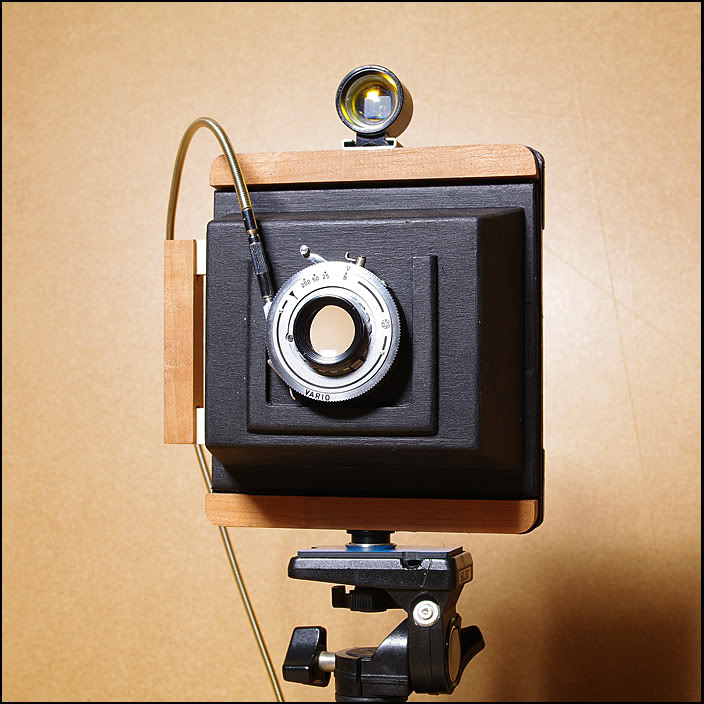
Pinhole
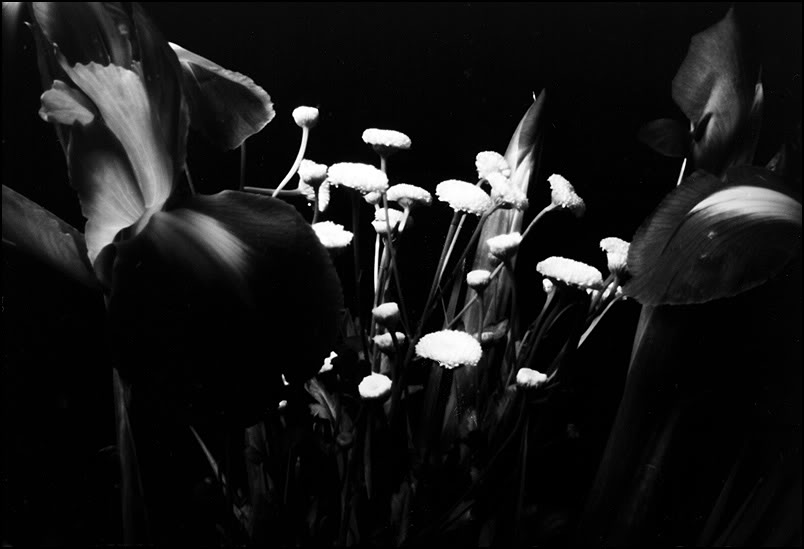
Agnar Rear Element (Reversed)
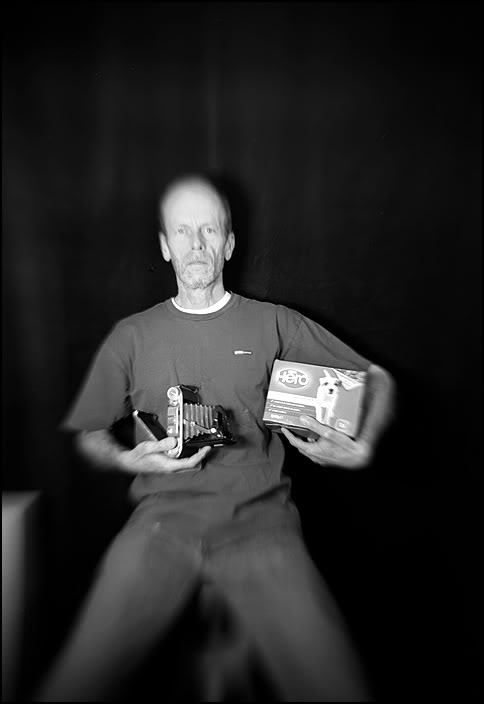
And doing what it was designed for.
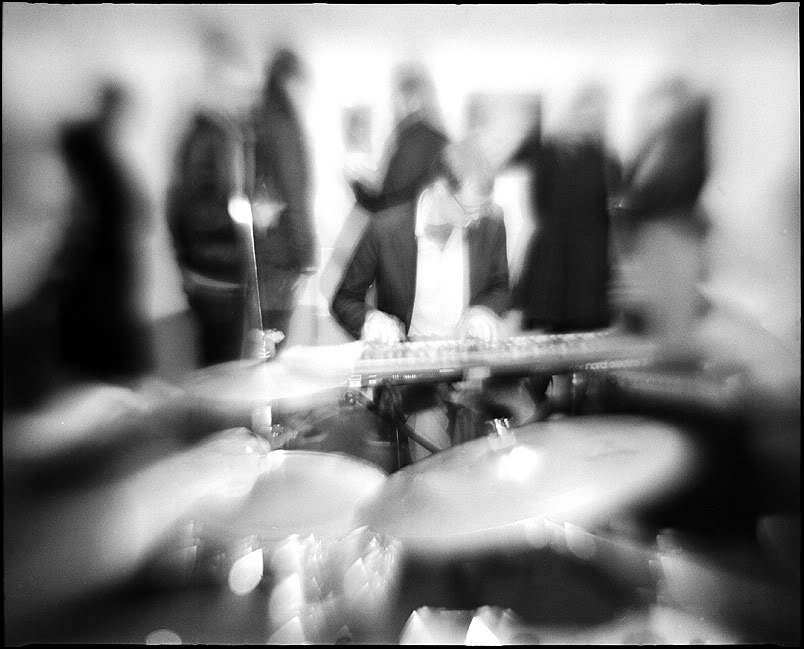
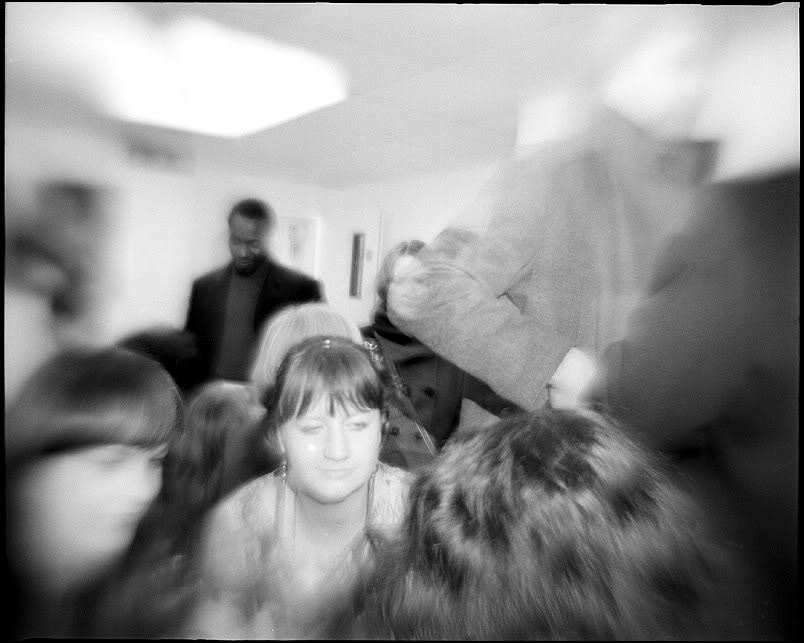
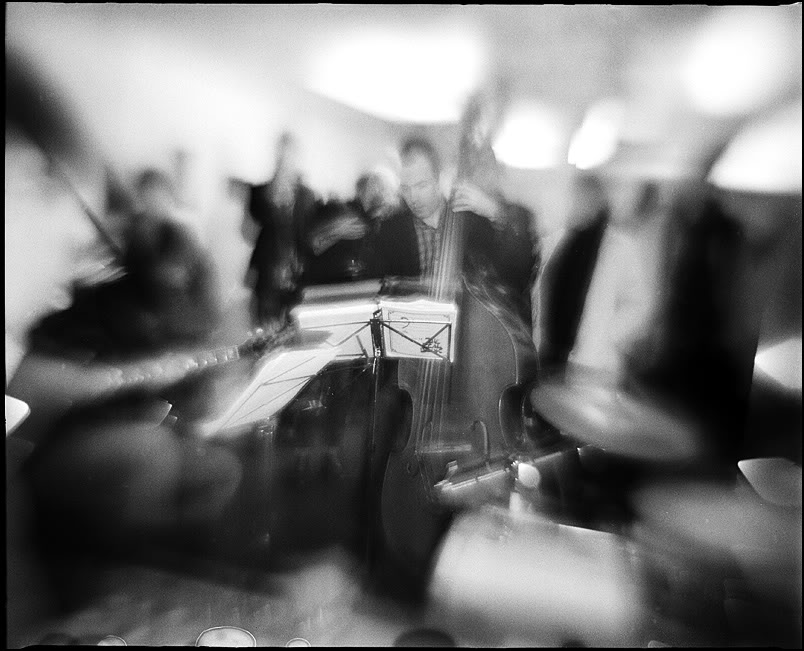
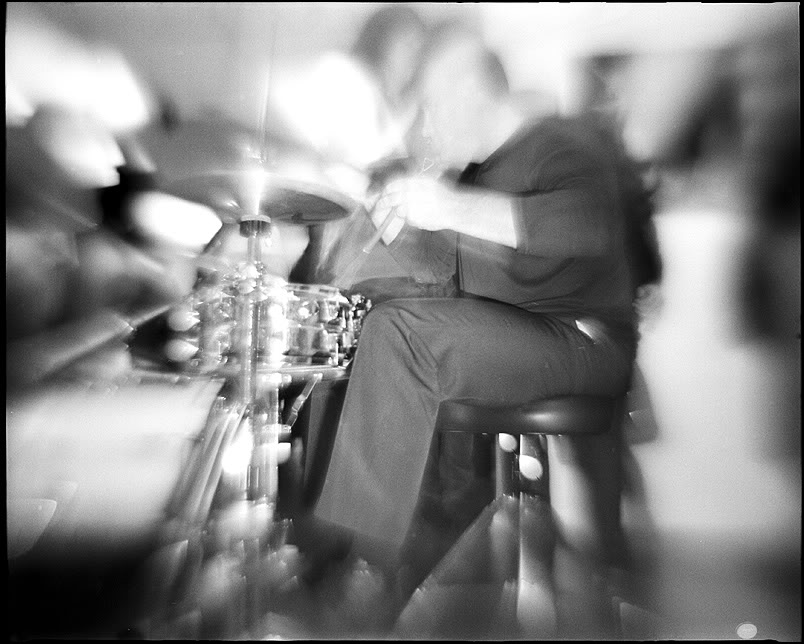
First published 2011/12/22